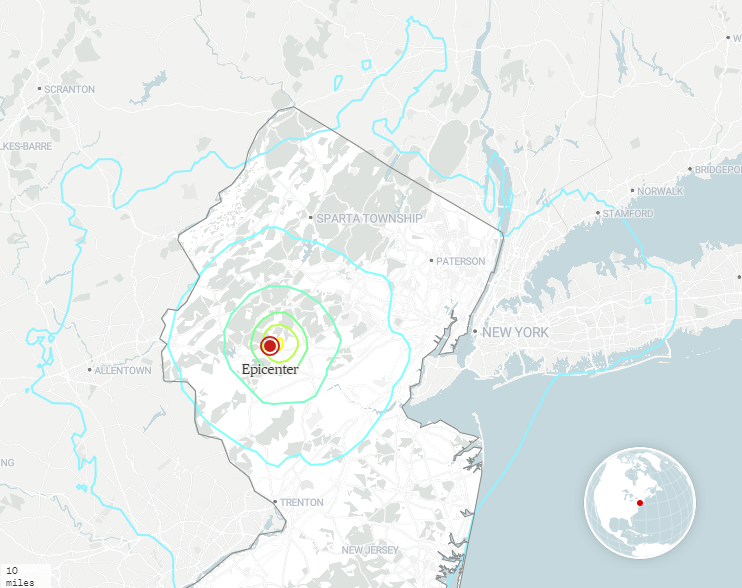In a startling turn of events on Friday morning, the East Coast of the United States was jolted awake by a rare seismic event—a 4.8 magnitude earthquake that sent shockwaves from Maryland to Maine. The epicenter, located near Lebanon, New Jersey, according to the U.S. Geological Survey (USGS), set buildings trembling and nerves on edge, marking the most powerful earthquake recorded in the Northeast in over a decade.
The seismic activity, occurring just before 10:30 a.m. ET, caught residents and officials off guard, as reports poured in of buildings swaying and objects falling from shelves. James Pittinger, mayor of Lebanon, New Jersey, recounted the surreal experience, labeling it “the craziest thing I’ve ever experienced,” though he noted no significant damage or loss of life had been reported thus far.
New York Gov. Kathy Hochul swiftly responded to the earthquake’s impact, mobilizing teams to assess any potential damage across the state. Mayor Eric Adams of New York City reassured citizens during an afternoon briefing, stating that no major injuries or infrastructure disruptions had been observed, urging residents to continue with their daily routines.
However, the quake did prompt precautionary measures, including temporary ground stops at major airports such as Newark Liberty International Airport and John F. Kennedy International Airport. Transit services, including the Port Authority Transit Corp. and New Jersey Transit, experienced suspensions and delays as thorough inspections were conducted to ensure safety.
While seismic events are relatively uncommon in the Northeast, the geological makeup of the region can magnify their impact. Frederik J. Simons, a geosciences professor at Princeton University, shed light on the situation, explaining how the shallowness of the fault system in New Jersey contributed to the intensity of the shaking, which lasted approximately 35 seconds.
The earthquake’s occurrence on the Ramapo fault system, an old and mostly inactive fault line, underscores the intricate tectonic activity underlying the region. Simons likened the phenomenon to an ancient structure creaking and groaning, with intermittent bursts of movement as accumulated stress is released.
Despite its moderate magnitude, the earthquake’s effects rippled far and wide, with reports of shaking extending as far as Massachusetts and Maryland. The event reignited memories of past earthquakes in the area, including the 2011 quake centered in Virginia that prompted widespread evacuations along the East Coast.
As emergency management officials conduct thorough assessments and residents share their experiences, one thing becomes abundantly clear: even in regions not traditionally associated with seismic activity, the unexpected can still occur. Friday’s earthquake serves as a poignant reminder of the importance of preparedness and resilience, even in areas where such events are rare occurrences.

